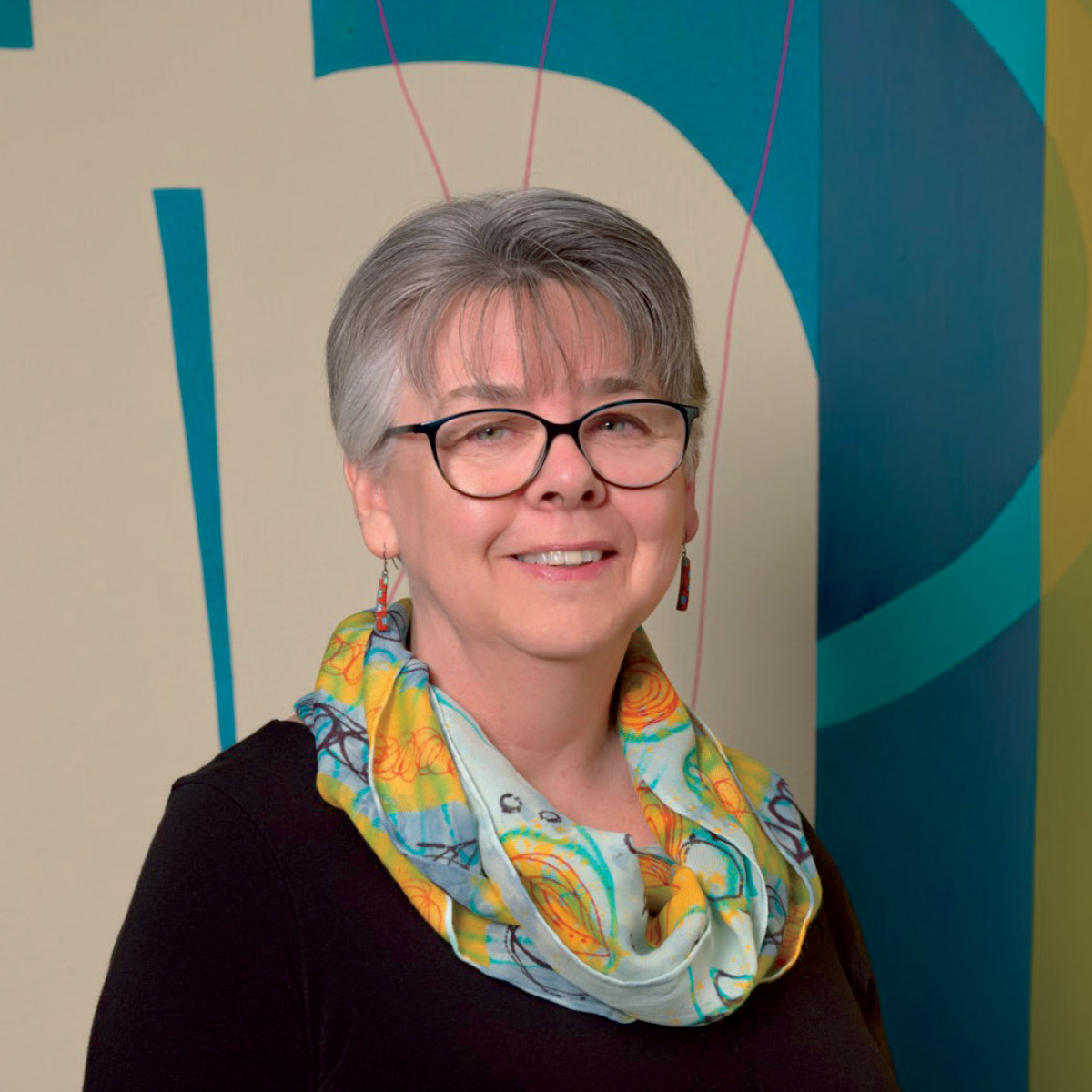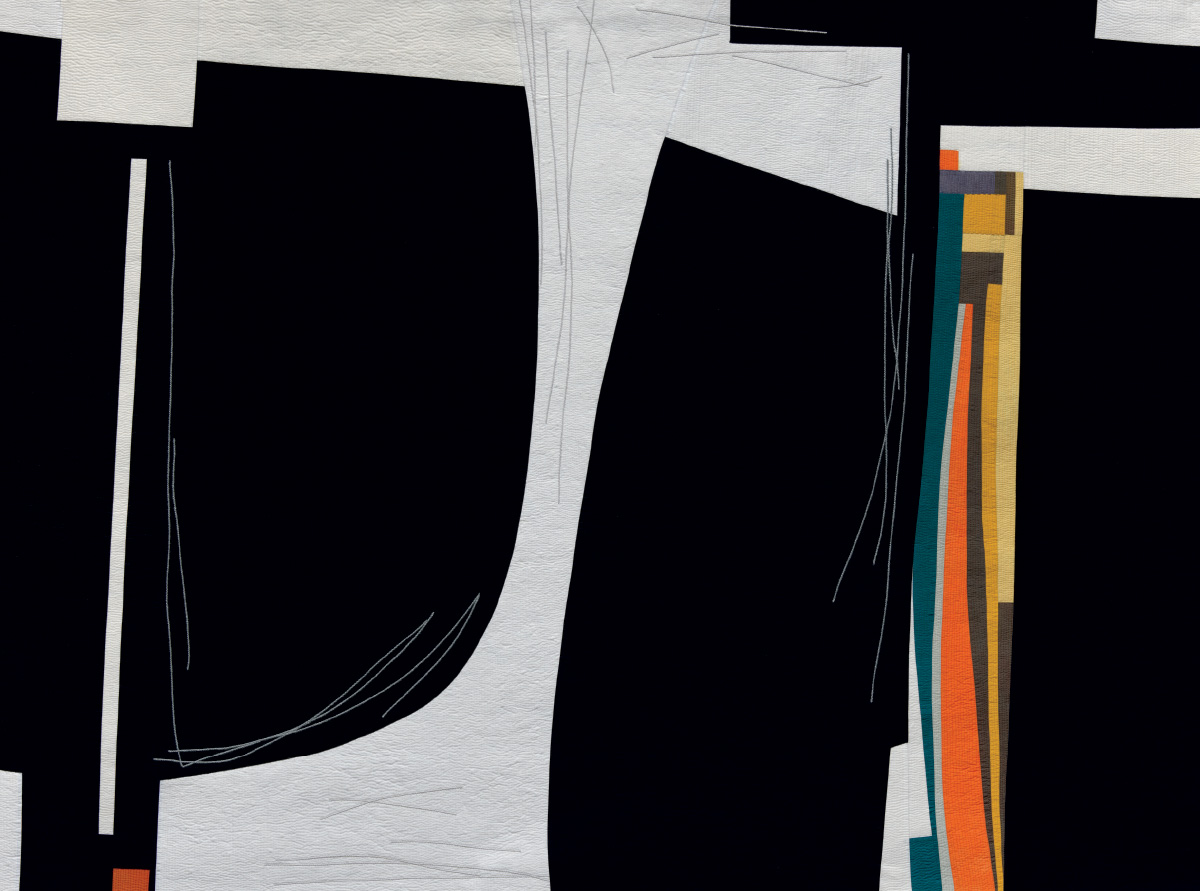

aren Schulz ’75 wandered the galleries of Quilt National in Athens, Ohio, looking for her entry Girl in the City with Blue Hair. She was thrilled to be accepted by this prestigious, biennial juried competition for contemporary art quilts on just the second time she applied. But as she turned one corner after the next, she could not find her submission.
“I thought, ‘It’s not here. They must have made a mistake,’ ” Schulz recalls. “Someone is going to tap me on the shoulder and say, ‘We’re sorry, but you didn’t actually get in the show, and you’ll have to leave now.’ ”
But then a staff member guided Schulz to her quilt, prominently displayed with a medallion on it right by the front door. “I thought, ‘Great! I won something,’ ” she says. “Then I found out I had won Best of Show. I could barely stand.”
Since that win in 2015, Schulz has earned the standing of one of the nation’s leading contemporary fiber artists. She won a second Best of Show at Quilt National in 2019 for her piece A Conversation and judged the 2021 competition. She has loaned two of her pieces to the State Department’s esteemed Art in Embassies program. And two of her works — A Conversation as well as … and the Skeptic — are now in the permanent collection of the International Quilt Museum in Lincoln, Neb.
Schulz did not consider herself the creative one in her family while growing up. Her father was into music, her brother an artist. She learned to sew at age 9 on her grandmother’s treadle machine. The psychology major sewed some of her pledge formal dresses while at Bucknell, where the introductory art history class — nicknamed “Art in the Dark” — was one of her favorite courses.
Schulz made her first quilt, from a pattern, in 1980 as a college-graduation present for her sister. “I made so many huge mistakes on that quilt,” she says. “It was just awful. I thought, ‘Well, the next one I make is going to be the way I want it to be.’ From then on, I never bought another pattern.”


Schulz became a full-time artist in 2012, giving her more time to explore new avenues of expression in her home studio in Silver Spring, Md. She hand-dyes all of her fabrics, which opens up a much broader spectrum of colors. She now incorporates couched lines, pieces of thread or yarn laid on the quilt’s surface and sewn over in a zig-zag pattern with a machine. She also expanded into acrylic and mixed-media works on paper. That motivated her to try surface design — applying thickened dye to a quilt’s surface.
Schulz often finds inspiration for her pieces through what she calls “accidental composition. I’m greatly influenced by things I see every day and might not be consciously aware of how that seeps in.”
A trip to the Art Institute of Chicago provided a pivotal creative spark. “The sheer breadth of the work I saw in one day was mind blowing,” she says. “I came out and thought, ‘What are you afraid of? You can do anything!’ ” On the flight home, she sketched a new work, incorporating awkward shapes, plus scale and color choices that were different from anything she’d made before.
The creative risk paid off. That sketch became … and the Skeptic, now in the International Quilt Museum. Schulz says, “It’s the best feeling, to know my work is now in a place where it will be exhibited, seen, studied and cared for in perpetuity. That’s terrific.”